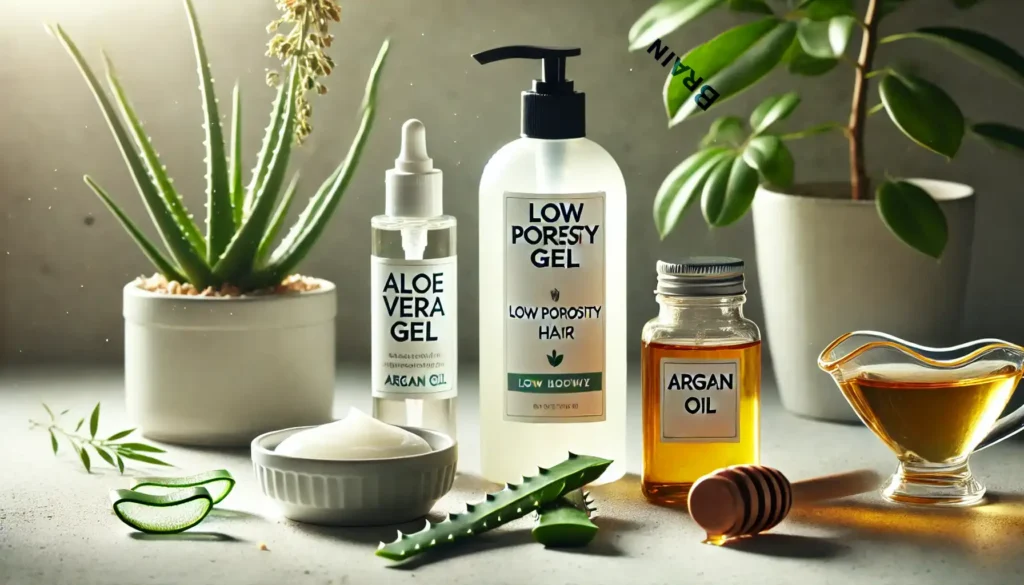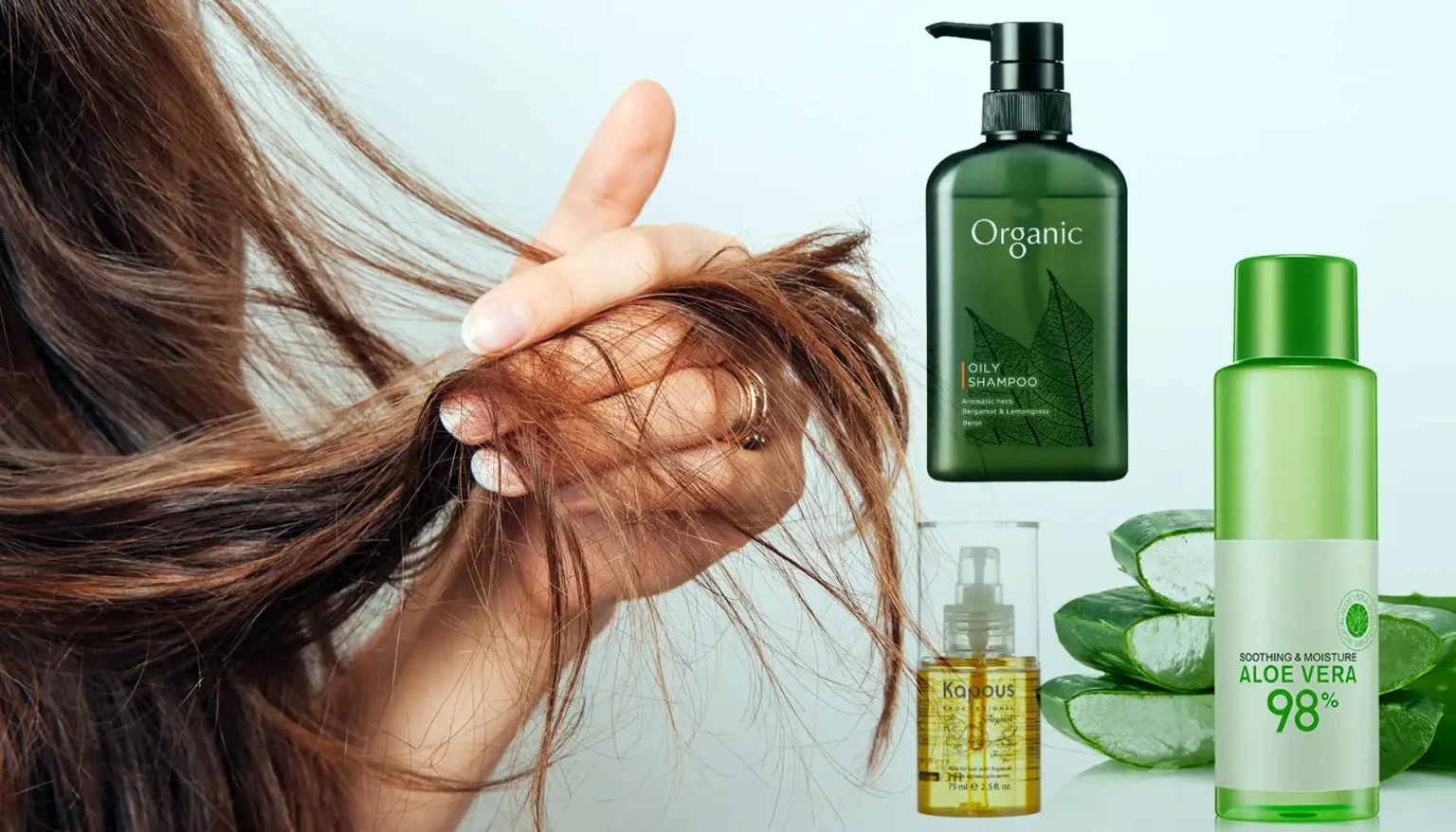Caring for low porosity hair can feel like a daunting challenge. Its tightly sealed cuticles make it naturally resistant to moisture, leading to a common struggle: products seem to sit on your strands rather than nourish them from within. While this can leave your hair feeling dry and unmanageable, understanding your hair’s unique needs is the first step toward achieving healthy, thriving locks.
Low porosity hair isn’t a flaw—it’s a distinct characteristic that requires a thoughtful approach. By choosing the right products and adopting techniques tailored to your hair type, you can break through the barriers that prevent effective hydration. From shampoos that cleanse without buildup to conditioners that penetrate deeply with the help of heat, this guide will show you how to transform your hair care routine. Let’s explore the best products for low porosity hair and uncover the secrets to keeping it soft, hydrated, and full of life.

Understanding Low Porosity Hair
What Is Low Porosity Hair?
Low porosity hair has tightly packed cuticles that lay flat, making it difficult for moisture and products to penetrate. While this hair type is naturally resistant to damage and frizz, it also tends to resist hydration.
How to Test Your Hair Porosity
You can determine your hair’s porosity with a simple water test:
- Take a clean strand of hair and drop it into a glass of water.
- Observe the strand for 3–5 minutes.
- If it floats on the surface, you have low porosity hair.
- If it sinks slowly, you have normal porosity hair.
- If it sinks quickly, you have high porosity hair.
Signs You Have Low Porosity Hair
- Water beads up and rolls off instead of soaking in.
- Hair takes a long time to dry.
- Products tend to sit on the surface of the hair rather than absorb.
- You notice buildup from creams, oils, or conditioners.
Why Low Porosity Hair Requires Special Products
The tightly closed cuticles on low porosity hair prevent moisture from entering but also prevent it from escaping. To properly care for low porosity hair, you need lightweight, water-based products that won’t add unnecessary buildup and can penetrate the hair shaft.
Key Ingredients to Look for in Low Porosity Hair Products
1. Lightweight Humectants
Humectants are essential for low porosity hair because they draw moisture from the air into the hair shaft. Ingredients like glycerin, aloe vera, and honey are particularly effective, as they provide hydration without weighing the hair down. Look for these in leave-in conditioners, moisturizers, and stylers.
2. Hydrolyzed Proteins
Low porosity hair doesn’t usually require heavy protein treatments, but small amounts of hydrolyzed proteins can be beneficial. These proteins are broken down into smaller molecules that strengthen hair, enhance elasticity, and improve moisture retention. Products with hydrolyzed silk, keratin, or wheat protein can add subtle structure and shine.
3. Clarifying Agents
Low porosity hair is prone to buildup, which can block moisture and nutrients. Ingredients like apple cider vinegar, tea tree oil, and baking soda are effective clarifying agents that help remove residue without stripping the hair of its natural oils. These should be included in shampoos or treatments used every few weeks.
4. Water-Based Formulas
Water should always be the first ingredient listed on any product for low porosity hair. Water-based formulas are lightweight, hydrating, and easily absorbed, making them ideal for moisturizing and styling.
5. What to Avoid
- Heavy Oils: Oils like coconut oil and castor oil often sit on the surface of low porosity hair, forming a barrier that blocks moisture absorption.
- Thick Butters: Ingredients like shea butter or cocoa butter can create buildup over time, leaving the hair feeling heavy and greasy rather than nourished.
Choosing products with the right ingredients is key to maintaining balanced, healthy, and moisturized low porosity hair.
Best Shampoos for Low Porosity Hair
1. Clarifying Shampoos
Product buildup is a common issue for low porosity hair, as heavy oils and butters often sit on the surface instead of being absorbed. Clarifying shampoos are essential for removing residue and refreshing your hair.
- Kinky-Curly Come Clean Shampoo: This sulfate-free shampoo effectively eliminates buildup without harsh ingredients. Its gentle formula balances moisture while restoring your hair’s natural shine.
- Carol’s Daughter Wash Day Delight: Made with micellar water, this cleanser gently removes dirt and product buildup while preserving your hair’s moisture. It’s lightweight, non-stripping, and perfect for low porosity strands.
2. Moisturizing Shampoos
Low porosity hair thrives with shampoos that cleanse while providing lightweight hydration to prevent dryness.
- SheaMoisture Baobab & Tea Tree Oil Low Porosity Protein-Free Shampoo: Specifically formulated for low porosity hair, this shampoo is free of heavy proteins and designed to deliver hydration without buildup.
- As I Am Curl Clarity Shampoo: A sulfate-free option that gently cleanses while leaving your hair soft, hydrated, and manageable. Its lightweight formula is ideal for maintaining moisture balance in low porosity hair.
These shampoos are perfect additions to a low porosity hair care routine, ensuring your hair stays clean, fresh, and ready to absorb moisture.
Best Conditioners for Low Porosity Hair
1. Lightweight Rinse-Out Conditioners
For low porosity hair, rinse-out conditioners should provide hydration without leaving heavy residue. These lightweight formulas soften the hair while maintaining its natural balance.
- Tresemmé Botanique Nourish & Replenish Conditioner: Formulated with coconut milk and aloe vera, this conditioner delivers moisture without weighing down your strands, making it ideal for low porosity hair.
- Giovanni 50:50 Balanced Hydrating Conditioner: A water-based formula designed to balance moisture levels while leaving your hair soft, smooth, and easy to manage.
2. Leave-In Conditioners
Leave-in conditioners are essential for locking in moisture and preparing hair for styling. Look for lightweight options that won’t create buildup.
- As I Am Leave-In Conditioner: Enriched with aloe vera and coconut extract, this leave-in hydrates, detangles, and enhances softness without adding extra weight.
- Mielle Organics Pomegranate & Honey Leave-In Conditioner: This lightweight formula is perfect for detangling and moisturizing low porosity hair, leaving it soft and manageable.

3. Deep Conditioners
Deep conditioning treatments with heat help open the cuticle layer, allowing the product to penetrate deeply and provide long-lasting hydration.
- Jessicurl Deep Conditioning Treatment: Use this intensive treatment with a steamer or hooded dryer to boost moisture absorption and restore softness.
- TGIN Honey Miracle Hair Mask: Packed with humectants like honey and aloe vera, this mask deeply hydrates and nourishes, leaving your hair shiny and revitalized.
These conditioners cater to the unique needs of low porosity hair, helping you achieve lasting moisture and manageability.
Best Stylers for Low Porosity Hair
Lightweight Styling Creams and Gels
Stylers should add definition without greasiness:
- Camille Rose Aloe Whipped Butter Gel: Combines the hold of a gel with the softness of a cream.
- Uncle Funky’s Daughter Curly Magic Curl Stimulator: A gel perfect for defining curls while maintaining moisture.
Oils for Sealing Moisture
Light oils work best for sealing in hydration:
- Grapeseed Oil: Lightweight and rich in antioxidants.
- Argan Oil: Adds shine and softness without buildup.
Common Mistakes to Avoid with Low Porosity Hair
- 1. Overloading Your Hair with Products
- Using too many products, or layering heavy creams, oils, and stylers, can lead to significant buildup on low porosity hair. This buildup creates a barrier that blocks moisture and nutrients from reaching the hair shaft, leaving it dry and dull. Instead, focus on a minimalist approach with lightweight, water-based products.
- 2. Neglecting Clarifying Shampoos
- Low porosity hair is prone to residue buildup from products that don’t fully absorb. Skipping clarifying shampoos can exacerbate this issue, leaving your hair feeling heavy and unmanageable. Use a clarifying shampoo every 2–4 weeks to cleanse your scalp and strands, creating a fresh foundation for hydration.
- 3. Relying Solely on Cold Water
- While cold water rinses are excellent for sealing moisture and closing the cuticle, they don’t open the cuticle to allow products to penetrate. During deep conditioning or cleansing, always use warm water or incorporate steam to gently lift the cuticle layer and help products absorb.
- 4. Using Heavy Butters and Oils
- Thick butters like shea or heavy oils like coconut may sit on the surface of low porosity hair rather than being absorbed. This can block hydration instead of encouraging it. Opt for lightweight oils (like grapeseed or argan) and water-based moisturizers to avoid this common pitfall.
- By steering clear of these mistakes, you can maintain soft, hydrated, and healthy low porosity hair while avoiding unnecessary frustration.
Additional Tips for Managing Low Porosity Hair
Leverage Heat for Better Moisture Absorption
Heat is a game-changer for helping low porosity hair absorb moisture. The tightly packed cuticles on this hair type can resist penetration, but warmth encourages them to open, allowing hydration to sink in. Here’s how to incorporate heat into your routine:
- Deep Conditioning with Heat: Use a hooded dryer, hair steamer, or even a warm towel wrap during deep conditioning sessions. This ensures the conditioner penetrates the hair shaft effectively.
- Warm Water Rinses: Swap cold water rinses for warm water to gently open the cuticle layer before applying treatments or rinsing out products.
Use Hair-Friendly Tools
The tools you use can make a big difference in maintaining the health of low porosity hair. Choose tools designed to minimize friction and prevent breakage:
- Wide-Tooth Combs: Ideal for detangling without tugging or damaging delicate strands.
- Satin or Silk Accessories: Pillowcases, bonnets, or scarves reduce friction while sleeping, helping to lock in moisture and prevent dryness.
Stick to a Structured Routine
Consistency is key when caring for low porosity hair. A well-planned routine ensures your hair stays hydrated and manageable:
- Clarify Regularly: Use a clarifying shampoo every 2–4 weeks to remove buildup from products that may sit on your hair’s surface.
- Deep Condition Weekly: Pair deep conditioning treatments with heat to improve moisture absorption and retention.
- Refresh Between Washes: Keep your hair hydrated and styled by spritzing it with water-based leave-ins or hydrating sprays as needed.
By following these tips, you’ll create an effective routine that keeps your low porosity hair moisturized, healthy, and beautiful.
Product Recommendations Round-Up
| Category | Product Name | Best For |
|---|---|---|
| Clarifying Shampoo | Kinky-Curly Come Clean | Removing buildup |
| Moisturizing Shampoo | SheaMoisture Low Porosity Protein-Free Shampoo | Lightweight hydration |
| Rinse-Out Conditioner | Giovanni 50:50 Balanced Hydrating Conditioner | Balancing moisture |
| Leave-In Conditioner | As I Am Leave-In Conditioner | Hydrating and detangling |
| Styling Gel | Uncle Funky’s Daughter Curly Magic Curl Stimulator | Curl definition without buildup |
| Lightweight Oil | Grapeseed Oil | Sealing in moisture and adding shine |
FAQ
1. What exactly is low porosity hair?
Low porosity hair has a tightly bound cuticle layer with overlapping scales that lay flat. This structure makes it difficult for moisture (water) and products to penetrate the hair shaft, but once inside, moisture is retained well. A common sign is that water or products tend to bead up and sit on the hair rather than being absorbed quickly.
2. What are the main challenges of caring for low porosity hair?
The primary challenges are moisture absorption and product buildup. Because the cuticles are so tight, it’s hard to get moisture in, and lightweight products can sit on the surface and accumulate, leading to hair that feels greasy, stringy, or stiff without actually being hydrated.
3. What is the right way for how to choose and use products for low porosity hair?
Choosing and using products correctly involves a few key strategies:
- Choose Lightweight Formulas: Look for water-based, liquidy products like milks, mousses, and glycerin-based serums. Avoid heavy butters and oils as primary ingredients.
- Apply to Damp Hair: Always apply leave-in conditioners, creams, and stylers to soaking wet hair. This helps the product dilute and slip past the tight cuticles.
- Use Heat for Deep Conditioning: When using a deep conditioner, apply gentle heat with a steamer or warm towel. The heat helps lift the cuticles slightly to allow the moisturizing ingredients to penetrate effectively.
4. Which ingredients should I look for in products for low porosity hair?
Focus on lightweight humectants and penetrating proteins:
- Humectants: Glycerin, Honey, Aloe Vera Juice (best in humid climates or with a sealant).
- Lightweight Oils: Argan Oil, Sweet Almond Oil, Safflower Oil.
- Amino Acids & Light Proteins: Hydrolyzed Rice Protein, Silk Protein, or Keratin. These are small enough to enter the hair shaft and strengthen it without causing buildup.
5. Which ingredients should I avoid or use sparingly?
Use these heavy ingredients with caution, or only on the ends of your hair:
- Heavy Oils & Butters: Raw Shea Butter, Coconut Oil (for some), Castor Oil. These are very likely to sit on the hair and cause buildup.
- Silicones that are not water-soluble: Ingredients ending in “-cone” like Dimethicone. While they can add shine, they create a barrier that further blocks moisture. If you use them, clarify regularly.
- Heavy Waxes: These can immediately weigh hair down and cause buildup.
6. How often should I clarify low porosity hair?
Regular clarifying is essential to remove product buildup that blocks moisture. Use a gentle, sulfate-free clarifying shampoo or a shampoo with mild sulfates (like C14-16 Olefin Sulfonate) every 2-4 weeks, depending on how quickly your hair accumulates buildup.
7. Can protein treatments damage low porosity hair?
Not if chosen correctly. Low porosity hair often needs small, hydrolyzed proteins to strengthen it from within. However, it is prone to protein overload from large, heavy proteins. Look for “hydrolyzed” on the label and use protein treatments sparingly (e.g., once a month) or opt for lightweight daily products that contain a small amount of protein.
8. What is the LOC or LCO method, and is it good for low porosity hair?
The LOC (Liquid, Oil, Cream) or LCO (Liquid, Cream, Oil) method is a layering technique to lock in moisture. For low porosity hair, a simplified version often works better because too many layers cause buildup. Try the LO (Liquid, Oil) method: apply a water-based leave-in (Liquid), then seal with a lightweight oil (O). You can skip the heavy cream (C).
Final Thoughts on Low Porosity Hair Products
Managing low porosity hair begins with understanding its unique characteristics and choosing products that cater to its needs. Lightweight, water-based formulations and a focus on removing buildup are key to maintaining healthy, hydrated strands. By incorporating the right shampoos, conditioners, and stylers into your routine, you can enhance your hair’s ability to absorb and retain moisture, resulting in soft, shiny, and vibrant locks.
It’s important to remember that every head of hair is different. Don’t be afraid to experiment with products and techniques to discover what works best for you. With patience, consistency, and the right approach, you’ll unlock the full potential of your low porosity hair and keep it looking its best every day.
Resources
- The Science of Hair Porosity – A detailed explanation of hair porosity and how it impacts product absorption.
- How to Test Your Hair Porosity at Home – Step-by-step instructions for determining your hair porosity.
- Low Porosity Hair Product Recommendations – A curated list of lightweight products for low porosity hair.
- Deep Conditioning with Heat for Maximum Hydration – Why and how to use heat during deep conditioning treatments.
- The Benefits of Humectants for Hair – An overview of humectants like glycerin and how they work.
About the author
Max Wild is a health writer and researcher focused on cancer awareness, prevention, and patient education. He translates complex medical topics into simple, practical guidance so readers can have more informed conversations with their doctors.

